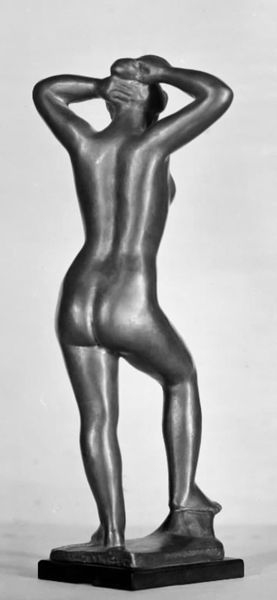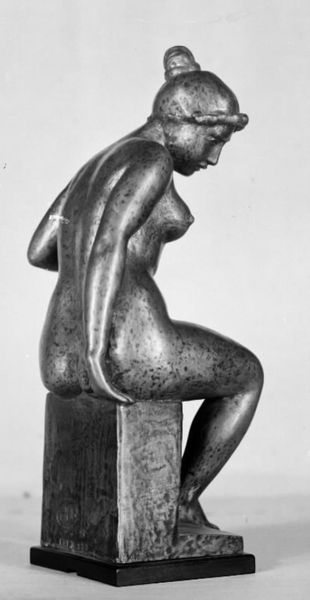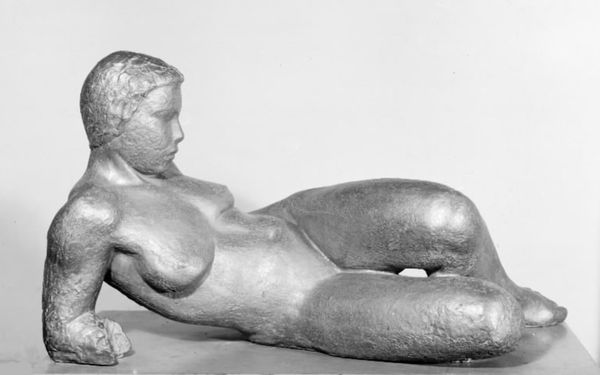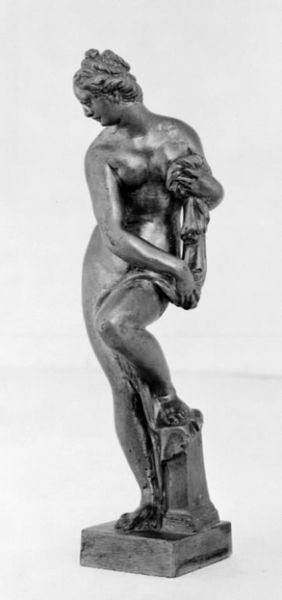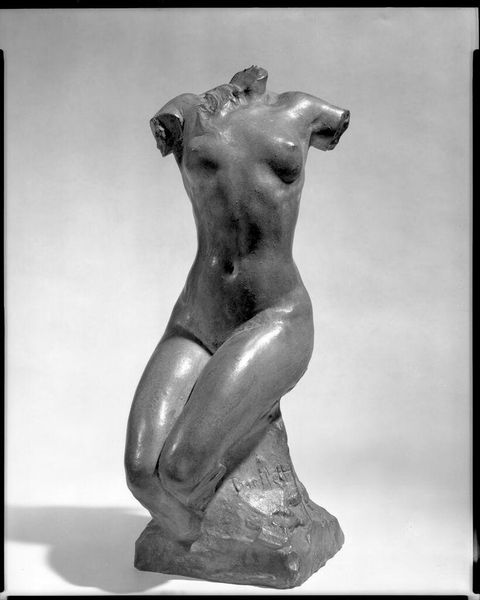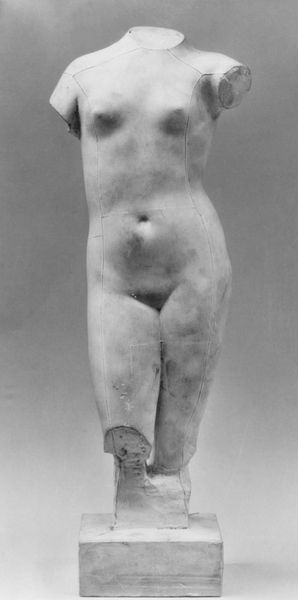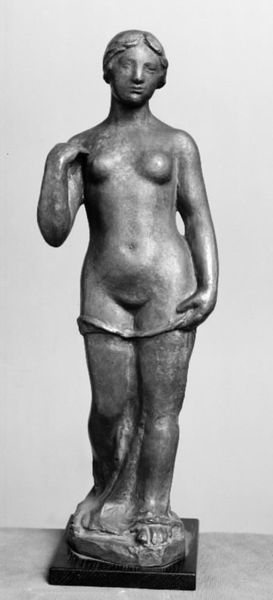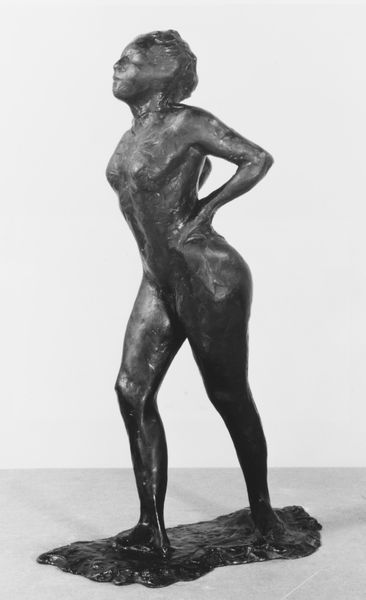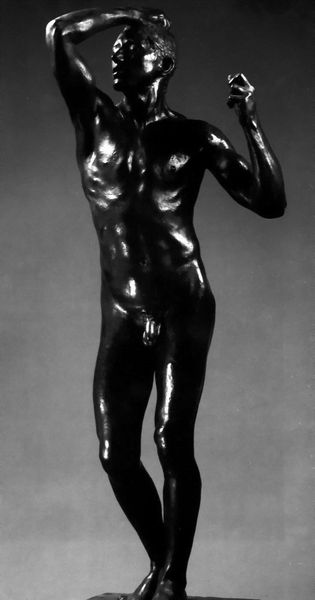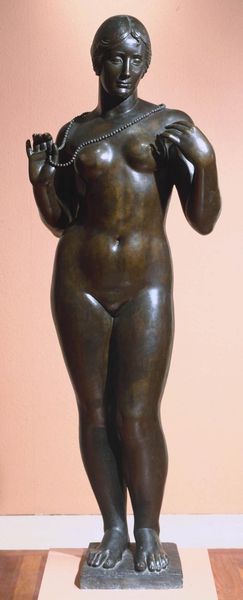
metal, bronze, sculpture
#
art-deco
#
metal
#
sculpture
#
black and white format
#
bronze
#
figuration
#
sculpture
#
black and white
#
nude
#
realism
Dimensions: 36 cm (height) x 9.5 cm (width) x 9.5 cm (depth) (Netto)
Curator: Here we have Svend Rathsack's bronze sculpture, "Female Torso," created between 1930 and 1933. It resides here with us at the SMK, Statens Museum for Kunst. Editor: Striking! It has a strangely melancholic feel. The shiny, almost slick, bronze is intensely contrasted against the raw edges where, presumably, the arms and head were meant to be. Curator: Indeed, that contrast speaks volumes. The realism of the body—every curve, every soft contour—almost mocks the violent truncation. Rathsack clearly intended a tension, didn't he? Perhaps about idealised beauty versus... interrupted existence? Editor: Or, maybe it speaks to the inherent violence in sculpting. You have this heavy bronze, wrestled into this classically feminine form. The process itself involves tremendous physical labor. Smelting, casting, polishing – think of the foundry workers, the repeated touch of hands shaping it all. Is this beauty born of toil? Curator: Fascinating point! I love how the polished surface captures light, though. It softens the overall effect, drawing you into the details. There's a sensuality, wouldn't you agree? Even in the partial form. I almost imagine it feels cool to the touch. Editor: Absolutely, the materiality does invite touch, mimicking human skin. But thinking about production... bronze at the time involved a certain type of industry and extraction, global markets. Is our serene nude also tied to labor exploitation or colonialism? Does the shine attempt to cover that history? Curator: Wow, okay, now you've sent my brain spiraling! Perhaps art should disturb as much as soothe. So, maybe Rathsack's truncation challenges the glorification of the female form we often see in art? This isn't Venus rising from the sea, it is much more fragmented. Editor: Right. Rather than celebrating an abstract "ideal," we're left grappling with something concrete. Raw materials, skilled labor, a body—and absence. The hands that shaped the bronze might well be absent. Curator: This is an artwork that continues to engage you, the closer you look at it, which to me makes a powerful artistic statement. Editor: I concur. It's far from simple object. This artwork shows, as all works do, echoes from everywhere to get to us here.
Comments
No comments
Be the first to comment and join the conversation on the ultimate creative platform.
